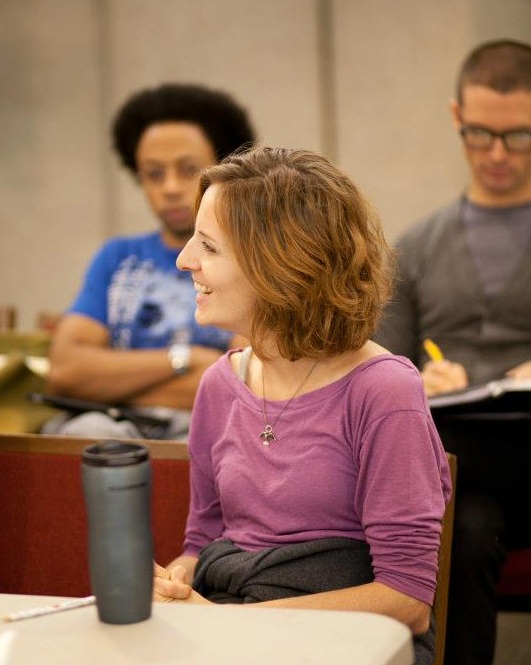Transformation and Enchantment
(This blog was originally posted by The Public Theater.)
I have a four year old daughter who is completely enchanted by fairy tales. Of course, the versions she knows and loves are Disney’s remakes, but the heart of these stories hasn’tchanged so much over time. As I watch my little girl drop to her knees and beg the Snow White on her television not to eat the apple for the hundredth time, I marvel at the enduring power of this form of storytelling.
Literary scholars have written volumes on this subject, but as a playwright, one characteristic of fairy tales interests me in particular: the world of the fairy tale is ruled by transformation. Kitchen maids transform into princesses, beasts and frogs transform into princes, queens transform into witches, and gardens transform into mazes of thorns. Fairy tales present a world in which people, objects, social hierarchies and power structures can change in the blink of an eye. True, magic is often involved, but most often that magic is brought about by human action.
It occurred to me that transformation is also at the heart of both the content and form of theater. Plays tell stories about characters encountering an obstacle that requires them to transform in some way or die—a young mother transforms from a girl whose life doesn’t exist beyond the confines of her household duties to a woman who finds existence beyond the doll’s house walls both imaginable and possible; a young man transforms from a nuisance of a lad into a King that will lead an army into the breach of battle.
As in fairy tales, magic, often lovingly referred to as “theater magic,” happens in the theater, and that magic is brought about by human action on stage. This human action on stage also requires transformation—a young man from New Jersey transforms into Hamlet, a Texas beauty queen transforms into a quiet, common Irish girl dancing at the festival of Lughnasa. Fairy tales, in their original form, also included this live transformation of the storyteller who shared the story orally with the childhood listener.
Often, theater artists tell stories hoping that their audiences will also be transformed in some way. In fairy tales, this is also true. For fairy tales, the focus of this transformation seems to be on belief; we want our children to believe that love can transform a beast into a prince, that kindness can transform a kitchen maid into a princess, that friendship can conquer evil and restore good.
As a playwright, I want all of these transformations. I want to write stories of people who are courageous enough to become what they are not because, for them, all the world depends on it. I want the actors telling my stories to transform into something they are not because they believe the audience depends on it. And I want my audience, upon seeing and hearing the story, to transform into something they are not because they know their life depends on it. This may sound ridiculously ambitious but, from my experience, both theater makers and theater goers are in it for exactly this—the magic of transformation.
